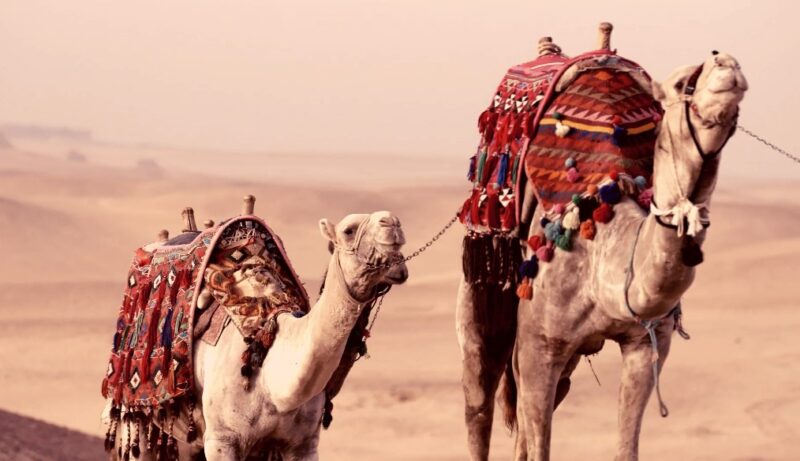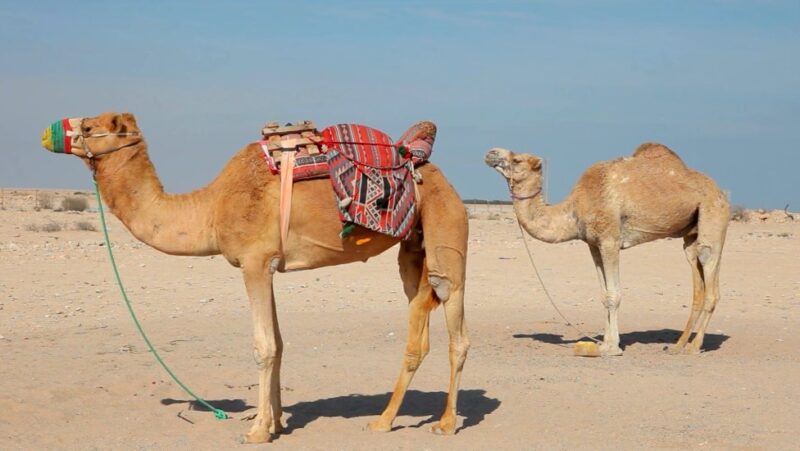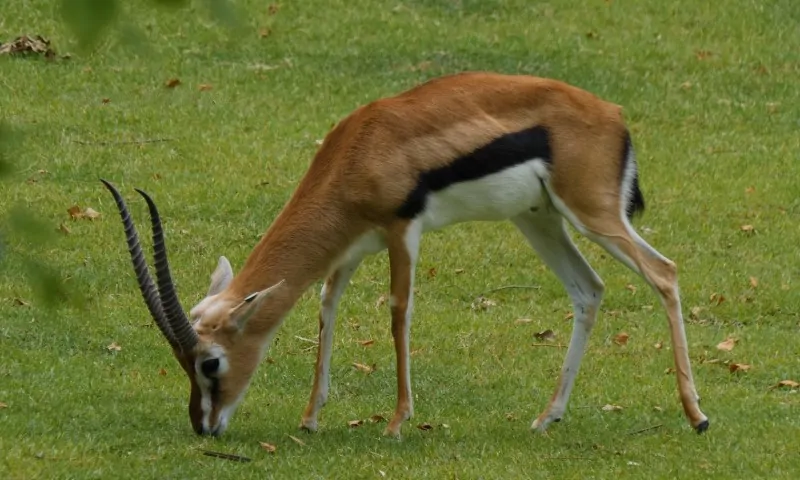Camels are truly remarkable creatures, famed for their endurance and ability to traverse long distances across some of the world’s harshest environments. Among the many fascinating aspects of these desert dwellers is their speed.
Yes, you heard that right! Camels can actually run quite fast. But how fast exactly? And which camel is the speed champion? Let’s explore the racing prowess of camels, focusing on the two main types: Dromedary and Bactrian.
Table of Contents
ToggleThe Contestants – Dromedary vs. Bactrian

Dromedary Camel
The Dromedary camel, also known as the Arabian camel, is easily recognizable by its single hump. Adapted to the hot and arid climates of the Middle East and North Africa, these camels are built for speed.
In short bursts, a Dromedary camel can reach up to 40 miles per hour (64 kilometers per hour). Imagine that! A creature often associated with slow, steady desert treks can actually sprint faster than many people might think.
When it comes to sustained speed, Dromedaries can maintain a pace of around 25 miles per hour (40 kilometers per hour) for a few hours. Their lighter build and adaptations for the desert give them an edge when it comes to running fast and covering ground quickly.
Bactrian Camel
On the other hand, we have the Bactrian camel, distinguishable by its two humps. These camels are native to the colder, rockier regions of Central Asia. They are built more for endurance and strength than for outright speed.
A Bactrian camel’s top running speed is about 30 miles per hour (48 kilometers per hour), which, while impressive, doesn’t quite match up to the Dromedary’s sprinting capabilities. In terms of sustained travel, Bactrians typically move at around 15 miles per hour (24 kilometers per hour) over longer distances.
Their adaptations are more suited to the rugged terrains and cooler climates they inhabit, where speed isn’t as crucial as it is in the open deserts.
Speed Capabilities of Camels
Short-Distance Sprints
Camels, especially the Dromedaries, can reach remarkable speeds in short sprints. As I already mentioned, the top speed of about 40 miles per hour (64 kilometers per hour) in these brief bursts is impressive and often surprises people.
This speed is particularly useful in scenarios where quick movement is essential, such as escaping predators or during competitive events like camel racing.
Sustained Speed
Over longer durations, camels show incredible endurance. Dromedaries can maintain speeds of up to 25 miles per hour (40 kilometers per hour) for a few hours, showcasing their ability to cover significant distances quickly.
This endurance is a testament to their evolutionary adaptations for desert life, just like certain types of plants.
Extended Travel
For really long journeys, camels can travel at approximately 12 miles per hour (20 kilometers per hour) for up to 18 hours.
This ability to sustain moderate speeds over extended periods is why camels have been the preferred mode of transportation in desert regions for centuries.
They can carry heavy loads and travel long distances without needing frequent rest or water.
Comparative Analysis of Camels vs. Other Animals

Horses
When we think of fast animals, horses often come to mind. A horse’s gallop can reach speeds of 25 to 30 miles per hour (40 to 48 kilometers per hour).
While this means horses are generally faster in short bursts compared to Bactrian camels, Dromedaries can actually keep pace with them in sustained travel over deserts.
Moreover, camels have the distinct advantage of being able to handle extreme heat and long distances without water, which is something horses struggle with in desert environments.
Zebras
Zebras are another comparison point. Their top speeds range from 35 to 43 miles per hour (56 to 69 kilometers per hour), which places them slightly ahead of camels in terms of raw speed.
However, zebras are built for shorter, quicker bursts to escape predators, whereas camels are built for endurance and long-distance travel, especially in arid regions.
Camel Racing Is the Desert’s Own Sport
Camel racing is a popular sport in many desert regions, highlighting the camel’s speed and endurance. It’s quite a sight to see these animals, often perceived as slow, racing at high speeds.
Surely, camels do not get a medal if they win, like humans. If you want to check out some medals or pins that are present in the case of humans, visit this site.
In professional races, camels can reach up to 40 miles per hour (64 kilometers per hour) in short sprints. The sport showcases not only the camels’ speed but also their training and the skill of their handlers.
Key Features of Camel Racing
- Speed: Camels can reach their top speeds in these races, making for an exciting and competitive event.
- Endurance: Races can vary in length, testing not just the camels’ speed but also their ability to maintain it over longer distances.
- Cultural Significance: Camel racing has deep cultural roots in many regions, particularly in the Middle East. It’s more than just a sport; it’s a tradition.
Final Thoughts
So, which camel is faster? The answer is clear: the Dromedary camel takes the crown for speed. Its adaptations for the hot, open deserts of the Middle East and North Africa make it a swift and agile runner.
While the Bactrian camel may not be as fast, it excels in endurance and strength, perfectly suited for the rugged terrains and cooler climates of Central Asia. Camels, with their unique adaptations, are truly remarkable.
Whether it’s the Dromedary’s impressive sprints or the Bactrian’s steadfast endurance, these animals continue to amaze us with their capabilities. Next time you see a camel, remember: there’s more to these incredible creatures than meets the eye, including their surprising speed!







